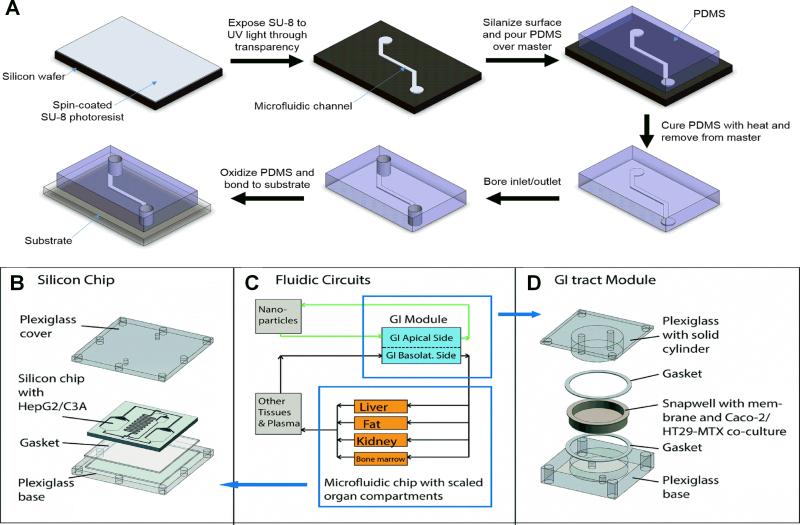Figure 4. Liver-on-a-chip platforms.
(A) Liver-on-a-chip platforms are often manufactured with soft lithography techniques, whereby a design is transferred to SU-8 photoresist using ultraviolet (UV) light through a high-resolution mask such as a transparency. Polydimethylsiloxane (PDMS) is then poured over the patterned SU-8 to construct the microfluidic channel. After curing and boring the inlet and outlet ports, the PDMS is oxidized and bonded to the device substrate. (B) A liver-on-a-chip platform featuring HepG2/C3A cells is established on a silicon chip sandwiched between plexiglass layers. (C) Using a physiologically-based pharmacokinetic (PBPK) model, the fluidic circuit is designed to mimic the interactions between the liver and gastrointestinal (GI) compartments. (D) The liver on-a-chip platform is connected with a GI platform consisting of a co-culture of Caco-2 and HT29-MTX cells. Reprinted from [65] with permission from the Royal Society of Chemistry.

